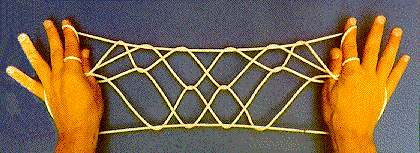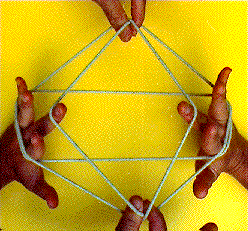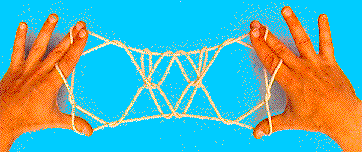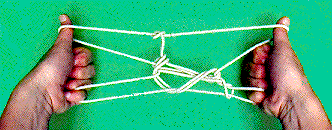
String figures are designs formed from nothing more than a loop of string. Most of the time, people use their fingers to weave string figures, but sometimes, they also use their toes, knees, elbows, and mouth. The result is often a fabulous pattern!

Have you ever used a loop of string to play "Cat's Cradle" with a friend? Cat's cradle is actually a series of string figures made by two-players.

No one knows for sure. String figures were once known to nearly all native inhabitants of East Asia, Australia, Africa, the Arctic, the Americas, and the Pacific Islands. In fact, some designs are believed to be ancient, perhaps dating from the stone age. Their function varied from place to place. In some locations, string figures provided a much needed artistic outlet -- competitions were held to see who could make the most interesting design. In other locations, string figures were used by tribal storytellers to illustrate their tales. Elsewhere, string figures served as good luck charms to help ensure a bountiful harvest or a successful hunt. But in most locations, string figures were made simply to kill time!

The number of possible designs is virtually limitless. Instructions for making over two thousand traditional patterns have been published since 1888, when anthropologist Franz Boas first described how to make an Eskimo string figure.
